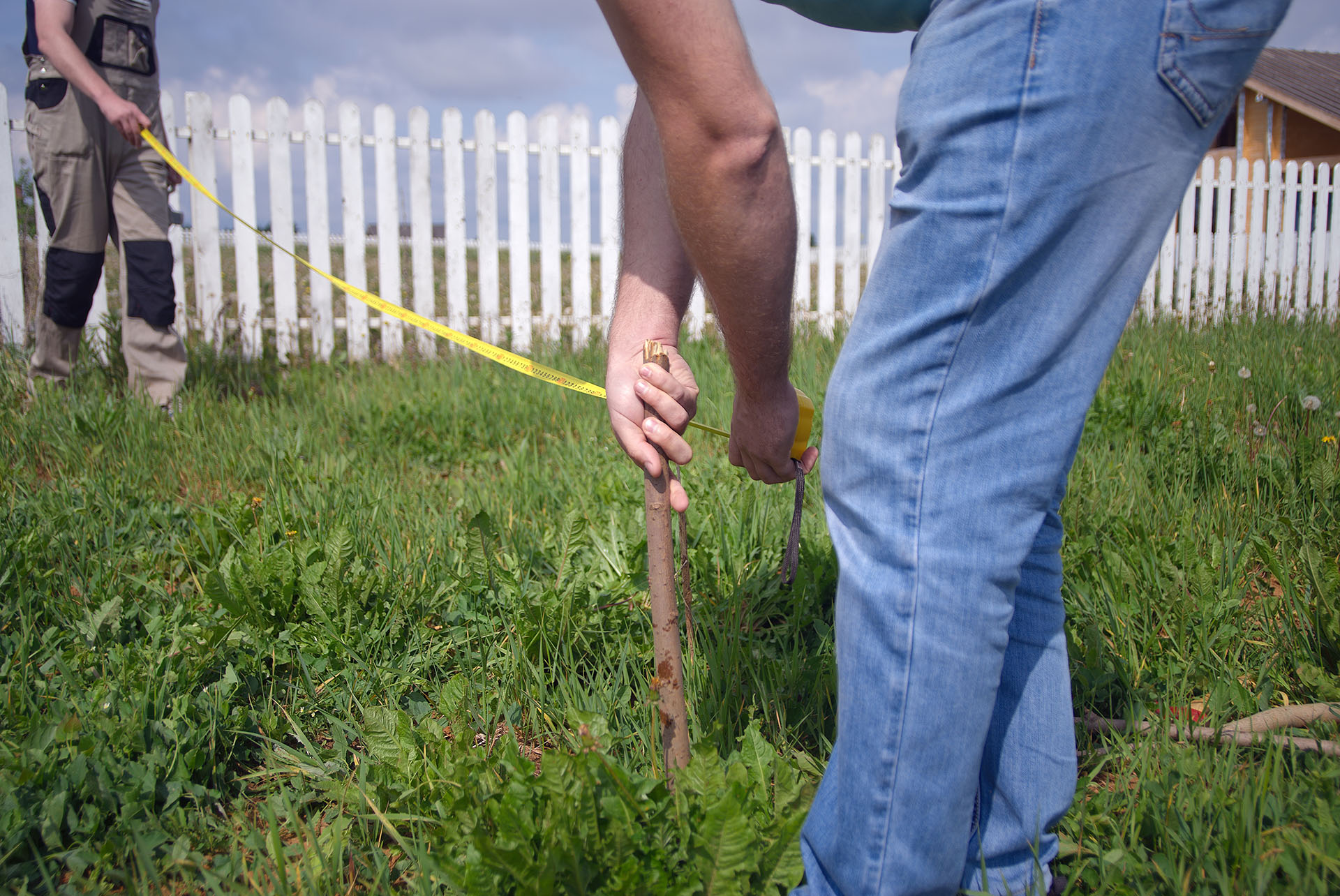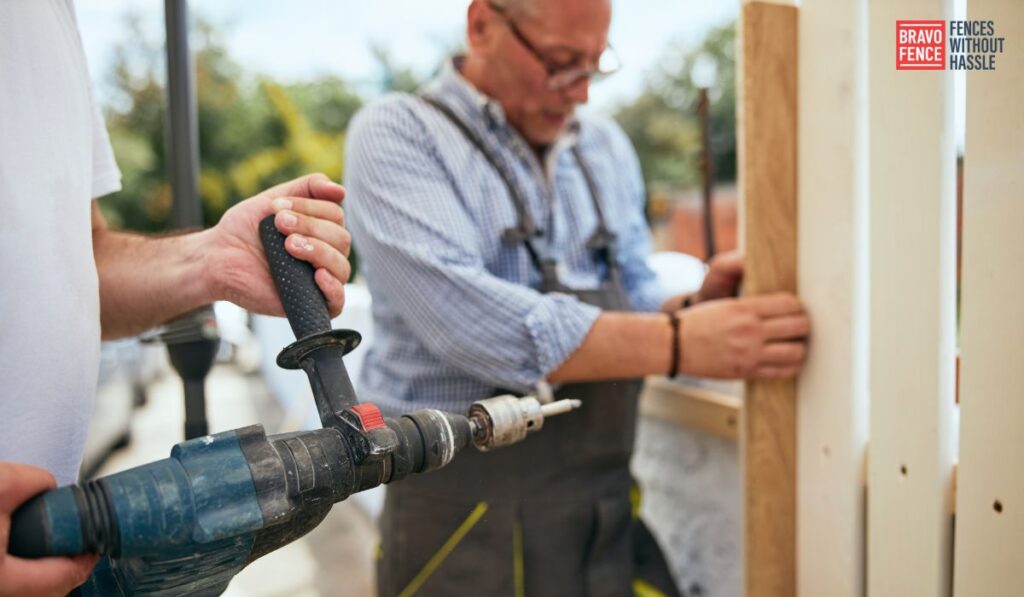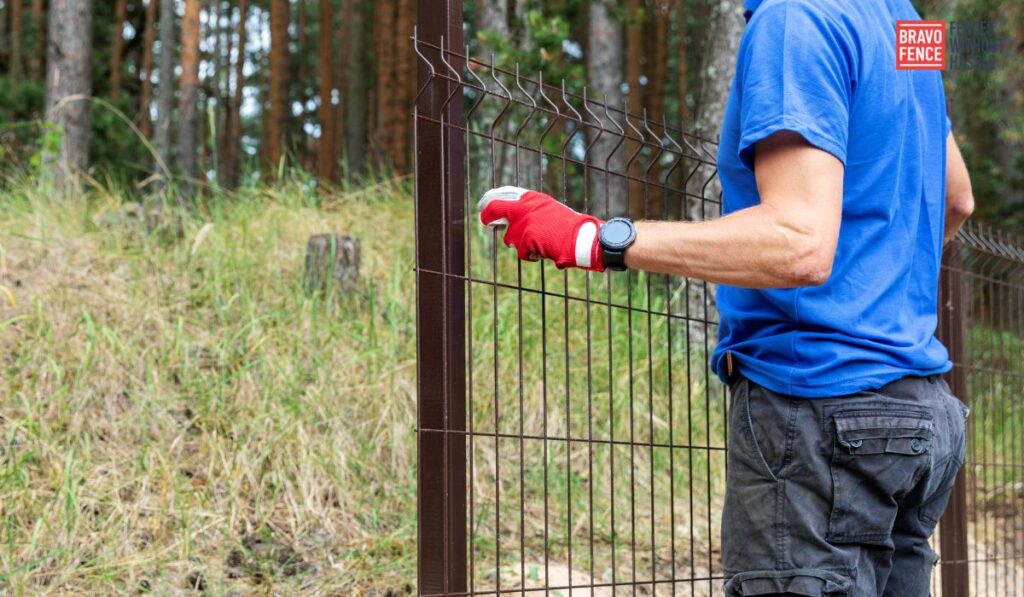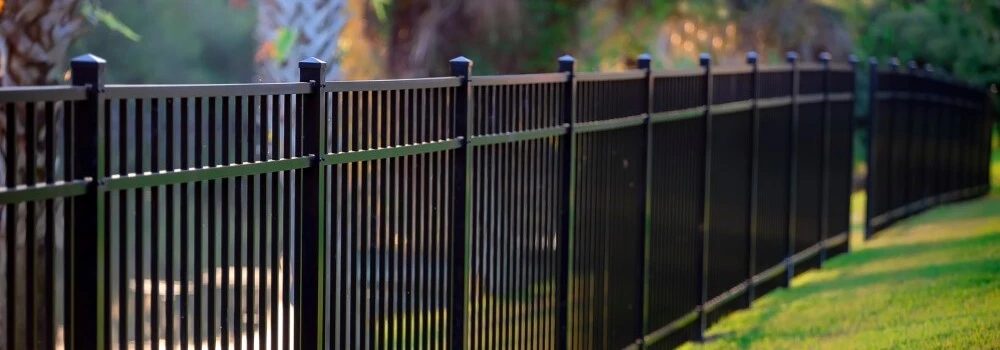
How to Prepare Your Yard for Fence Installation
Installing a fence is a significant and exciting process.
The vision of a fresh new fence in whatever material you choose is very appealing.
But before you can get started, there are several steps you will have to take to prepare your yard for fence installation.
The more well prepared you are, the smoother your installation will go.
So here are our tips for preparing your yard and your property for a smooth fence installation.
Get Your Plat
In many places, a plat is required to get the permits you need to build a fence.
In others, it may not be a firm requirement, but it is the best way to know your property lines.
But what is a plat?
A plat is a scale map of your neighborhood prepared by civil engineers.
The plat map delineates the boundaries of all of the properties in the area, which is why it is so critical for your fence installation.
Without it, you run the risk of overstepping your property line.
While it may seem like no big deal if your fence is just an inch or two over your property line, the law is not on your side.
If a neighbor or county inspector notices the infringement, you may be forced to take down your brand new fence and start over.
That can be a colossal waste of time and money, plus a bad move for your relationship with your neighbors.
Get the Permits
Once you have the plat, you can go about acquiring the permits you need for your project.
In general, only a homeowner or a licensed contractor can apply for a permit.
Different jurisdictions may have slightly different requirements for granting a permit.
However, in most places, you will need at least a plat or survey of your property and detailed drawings of what you plan to construct.
While you are getting your legal ducks in order, it’s also a good time to check local laws and rules to ensure that your fence meets all requirements.
Typically, fences may be regulated by municipal or county zoning laws, state and local building codes, and HOA rules where applicable.
There’s no sense in building a fence that doesn’t comply with the local regulations.
You may have to pay hefty fines or take down the whole thing.
Start Preparing Your Yard by Cleaning
The first step to prepare your yard for fence installation is simple: clean up.
Whether you plan to install the fence yourself or hire a fence building company, a messy yard will make everything harder.

Take a walk around your yard and first clean up any obvious trash.
Old tires, broken toys, tarps, or anything else that doesn’t need to be there should be thrown out.
Next, collect items you are keeping, like yard furniture, large toys, and similar articles, and move them as far as possible from the area where your fence will be built.
The more room you can give yourself or your installation company, the easier the process will be.
Remember, besides your tools, you will need space for lots of materials and wide aisles to move materials and yourself as you build.
Stake Out the Property Line
Once you have your yard cleared enough to work, you can start staking out your property line.
Preparing your yard for fence installation includes making absolutely sure that you know where you are building your fence.
A mistake of just a few inches could be disastrous.
So when in doubt, move the fence inside your property line.
The best way to mark your property line is also one of the simplest—place stakes along the line and run string between them.
In many cases, you can find your property’s boundaries by locating metal stakes that were driven into the ground when the plot was first laid out.
If that was a long time ago, you might need a metal detector to find the stakes.
But if you can find them, following those stakes is the most accurate way to find your property line.
Stake Out the Fence Line
If your fence will go somewhere other than exactly along your property line, now is the time to stake out the fence line.
Using the same method, driving stakes and running sting between them, mark the precise path your new fence will follow.
As you do this, it can be helpful to place the stakes where you plan to drive the fence posts.
Marking the posts will be useful as you plan and order your materials.
Once your posts are marked, you can measure the space between them and calculate how much fencing you need to order.
Clear the Fence Line
With your fence line precisely marked out, it’s time to clear the path for your fence.
Hopefully, your yard is already cleaned up, and you’ve made space around your work area.
But now it’s time to get down to the nitty-gritty.
Move carefully and slowly along your fence line and look for any obstruction.
Large items like trees and bushes may require shifting the fence line.
Smaller items, like stumps and rocks, can be removed.
Doing this work to prepare your yard for fence installation now will significantly speed up the installation process.
If you’re hiring a fence installation company, it could also save you money.
As you clear obstacles from your fence line, now is a good time to note any slopes or grades.
If a bump or dip is small enough, you might be able to level it now and save yourself time and trouble on installation.
But if the grade is significant, you will need to measure the grade and plan to build a fence on a slope.
Talk to Your Neighbors
They say that good fences make good neighbors, but not if you don’t talk to them about it.
If you are building a fence precisely along your property line, your neighbor may have some partial ownership of the fence.
Talk to them ahead of time to let them know your plans.
This new fence will affect them as much as it will affect you, so give them a chance to comment on your plans.
Also, if you have a decent relationship with your neighbor, you may even be able to split the cost of a new fence.
Find a Quality Fence Builder
Some people think fence building is a DIY project.
But most homeowners simply don’t have the skills and experience to build the fence they want to see.
The best way to prepare your yard for fence installation is to talk to a local fence builder like Bravo Fence Company and find out what you can do to make their work easier.
Having your plant prepared is a great first step, and you may need to clear stuff out of the way of the new fence.
But working with a fence building company will pay huge dividends in the speed, quality, and ease of your fence installation experience.
Conclusion:
In conclusion, preparing your yard for fence installation is a crucial step in ensuring a smooth and successful project.
By following the steps outlined above, you can avoid potential legal issues, comply with local regulations, and create an ideal environment for the fence installation process.
Clearing your yard, staking out property and fence lines, and communicating with your neighbors will help you avoid unnecessary obstacles and delays.
Remember that consulting with a professional fence builder can make a significant difference in the overall efficiency and quality of your fence installation.
By taking the time to prepare your yard properly, you can look forward to enjoying the benefits of a beautiful and functional fence for years to come.
FAQs
Why is it essential to get a plate before installing a fence?
Getting a plat, which is a scale map of your neighborhood showing property boundaries, is essential because it helps you know your property lines accurately. Building a fence without knowing the exact property boundaries can lead to legal issues and potential disputes with neighbors or local authorities. Overstepping your property line could result in costly consequences, such as having to remove and rebuild your fence.
What permits do I need for fence installation?
The permits required for fence installation can vary depending on your location and local regulations. Typically, you will need at least a plat or survey of your property and detailed drawings of your fence plans. It is essential to check with your local authorities to determine the specific permits needed for your project.

How should I prepare my yard before fence installation?
Before fence installation, start by cleaning up your yard and removing any debris or obstacles. Stake out the property line using stakes and strings to ensure accurate placement of the fence. Clear the fence line of any obstructions, and take note of any slopes or grades that may require special planning. Additionally, it’s crucial to talk to your neighbors about your fence plans, especially if it’s being placed along the property line.
Can I install the fence myself, or should I hire a professional fence builder?
While some people may consider fence installation as a DIY project, hiring a professional fence builder is often the best choice. Fence building requires specific skills and expertise to ensure the fence is secure, level, and meets all necessary regulations. A professional fence builder will help you save time, avoid mistakes, and ensure a high-quality installation.
How can talking to my neighbors benefit the fence installation process?
Communicating with your neighbors about your fence plans is essential to maintain good relationships and avoid potential conflicts. If your fence is being installed along the property line, your neighbor may have partial ownership of it. Discussing your plans with them in advance can help address any concerns they may have and potentially share the cost of the new fence.
What should I consider when choosing a fence builder?
When selecting a fence builder, consider factors such as their experience, reputation, and the quality of their work. Look for reviews and testimonials from previous customers to gauge their reliability and professionalism. Additionally, ask for quotes and compare prices to find a company that fits your budget while providing excellent service.
Tags: Complete Guide to Fence Installation Services, Complete Guide to Privacy Fencing, Everything You Need to Know About Fence Maintenance, Everything You Need to Know About Fence Upgrade Ideas, Explore Helpful Resources on Fence Repair Services, Inspiration and Tips on Fence Materials, Top Ideas and Insights About Custom Fence Designs, Top Ideas and Insights About Decorative Fencing, Top Ideas and Insights About Diy Fence Projects, Top Ideas and Insights About Garden Fencing, Top Ideas and Insights About Security Fencing
